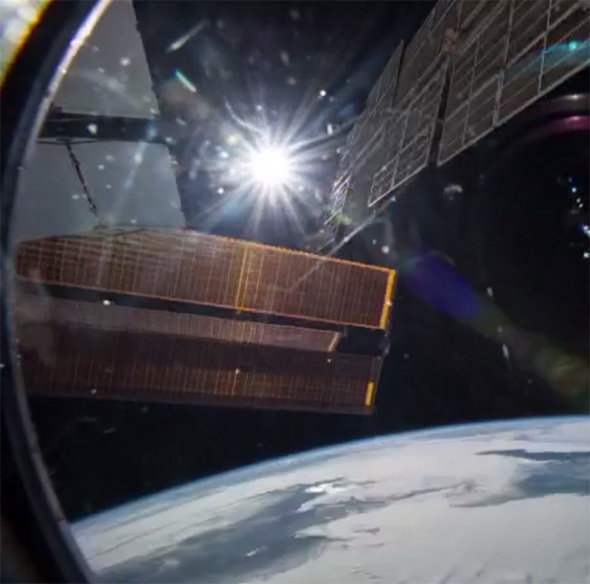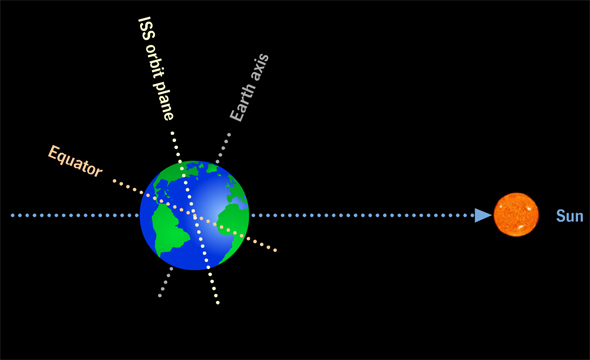The Long, Hot ISS Summer
Sometimes, I think that living in space is just a sped-up version of living on Earth.
Obviously, when you’re an astronaut on the International Space Station circling the planet at eight kilometers per second, making a complete orbit every 90 minutes, you see 16 sunrises and sunsets a day. That’s got be weird.
But due to a quirk of orbital mechanics, sometimes you don’t see any. Like someone who lives near the Earth’s poles during their respective summers, there can be times that denizens of the ISS don’t see any sunsets: The Sun makes a circle in the sky, never crossing the horizon.
What would that look like? Why, it would look like this:
That video, posted by astronaut Terry Virts, shows a time lapse of one orbit taken recently. You can see the Sun making that circle in the sky over the course of an hour and a half, and the station stays in full sunlight all the time.
How does this work? I wrote about it recently, when Virts posted a fun video of the Moon setting and getting squashed by atmospheric distortion. He mentioned the station is at a “high beta angle,” which refers to the plane of its orbit with respect to the Sun. Here’s a diagram that’ll help:
The orbit of the ISS is tilted with respect to the Earth’s equator by about 51°. Most of the time as it orbits our planet, the Earth gets between the ISS and the Sun, so it’s night on the station. But there are two times of the year when the orbital plane is nearly “face-on” to the Sun. When that happens, the Earth can’t block the Sun, and it’s daytime on the station 24 hours a, um, day.
It’s summer on the space station.
And that’s why the Sun doesn’t set in the video; it just makes a circle in the sky. This sort of motion can be confusing and difficult to understand, I know. As I mentioned in a post last week about Crash Course Astronomy, you get better with practice. I wind up drawing lots of doodles and diagrams that help me figure this stuff out, and call on my thousands of hours spent under the sky, watching the heavens swing around me.
That is not only fun, even joyous, it’s educational. It helps me grasp the cycles and motions of the sky. While a video of the Sun making little circles in the blackness is cool, it’s also a window into the behavior of the Universe itself. It’s amazing what you can learn just by looking up and thinking about what you’re seeing.



